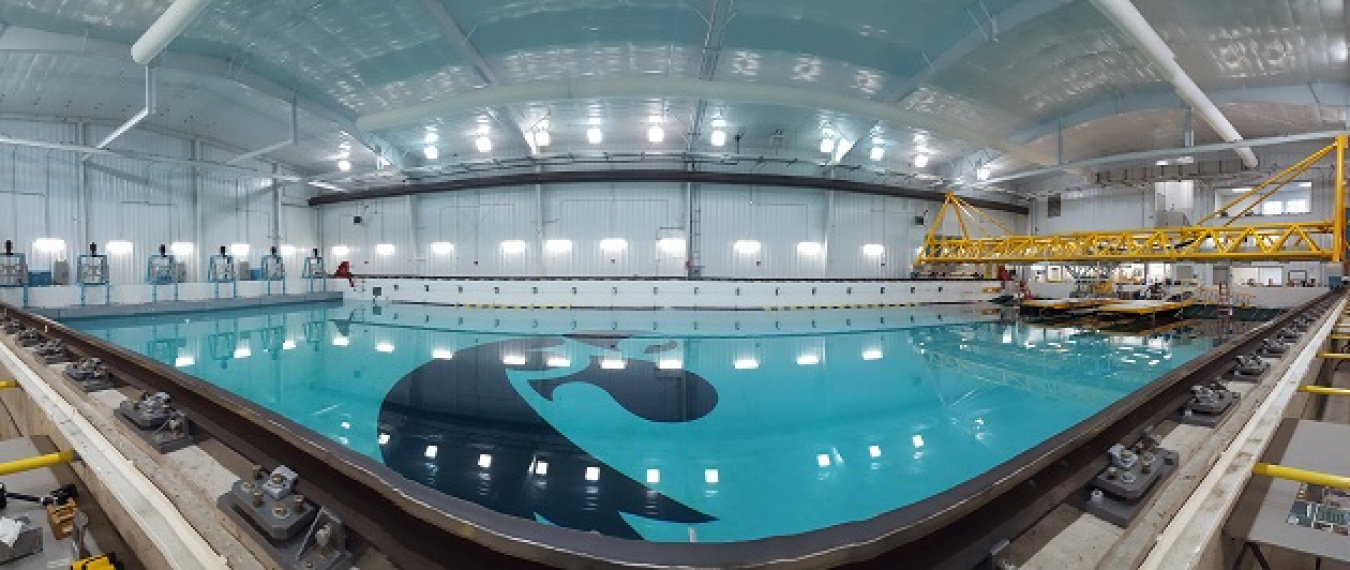Recently, in final preparation for our participation in Wave Energy Prize final round model testing, we have performed a series of 1:20th scale...
Water Power Technologies Office
June 16, 2016Recently, in final preparation for our participation in Wave Energy Prize final round model testing, we have performed a series of 1:20th scale model tests at the University of Iowa in order to make final adjustments to our Wave Energy Prize entry. We have posted a video of the deployment of our device on our blog you can find here: http://www.harvestwaveenergy.com/blog/wave-tank-testing

University of Iowa Testing Facility
Additionally we were asked to answer a few questions about our participation in the Wave Energy Prize; below are our responses:
Why are you participating in the Prize?
Our team is primarily motivated by the immense challenges of both engineering the world’s first cost-effective WEC system and commercialization of the technology. We are also motivated by what we see as the immense market opportunity that wave energy will address due to the shortcomings of existing renewable energy technologies related to the intermittent nature of solar and wind energies. We have recently published a video exploring the impact of solar intermittency on future renewable energy marketplace dynamics in California which you can find here:
http://www.harvestwaveenergy.com/blog/californias-problem-of-overgeneration
What do you think the role of government in driving innovation is?
The term “driving” may be over-reaching as private enterprise is always going to have greater motivation to drive innovation than public policy makers due to risk profiles. But it’s well established that government has a key role to play in defining technical and commercial challenges that align with societal needs and for financially and technically supporting early-stage technology developers that are pursuing the most innovative concepts. This is the SBIR model and it’s benefits have been proven many times over.
What has been the biggest challenge so far?
Convincing ourselves that the technical and commercial challenges are not insurmountable has been key to maintaining the focus and effort level necessary to compete in the Wave Energy Prize. Technically, one of our biggest difficulties is that computational models are inadequate for assessing some of the more complex dynamics of WEC systems and so wave tank testing, with its high costs and effort required, is in some cases the only available method for discovery and validation.
What is unique about your device?
It is the first attempt at a deep-water, oscillating wave surge collector type device intended for grid-scale electricity production.
What changes have you made in your device and approach over the course of the Prize?
We’ve made so many significant changes that I’ve lost track. Those I can recall include limiting the number of degrees of freedom to improve reliability, transitioning from a fixed frame to a taut-moored design to reduce costs, and to sharing power conversion equipment between multiple energy collectors.
What have you learned about WECs since participating in the Prize?
Most importantly we have learned that the oscillating wave surge class of devices has the highest potential for techno-economic performance of all WEC classes.
What are your plans if you win the Prize?
Whether or not we win the Wave Energy Prize our plans for the future include a year long R&D process to further develop our conceptual designs to improve techno-economic performance prior to our first ocean-going pilot scale demonstration scheduled for 2018.

